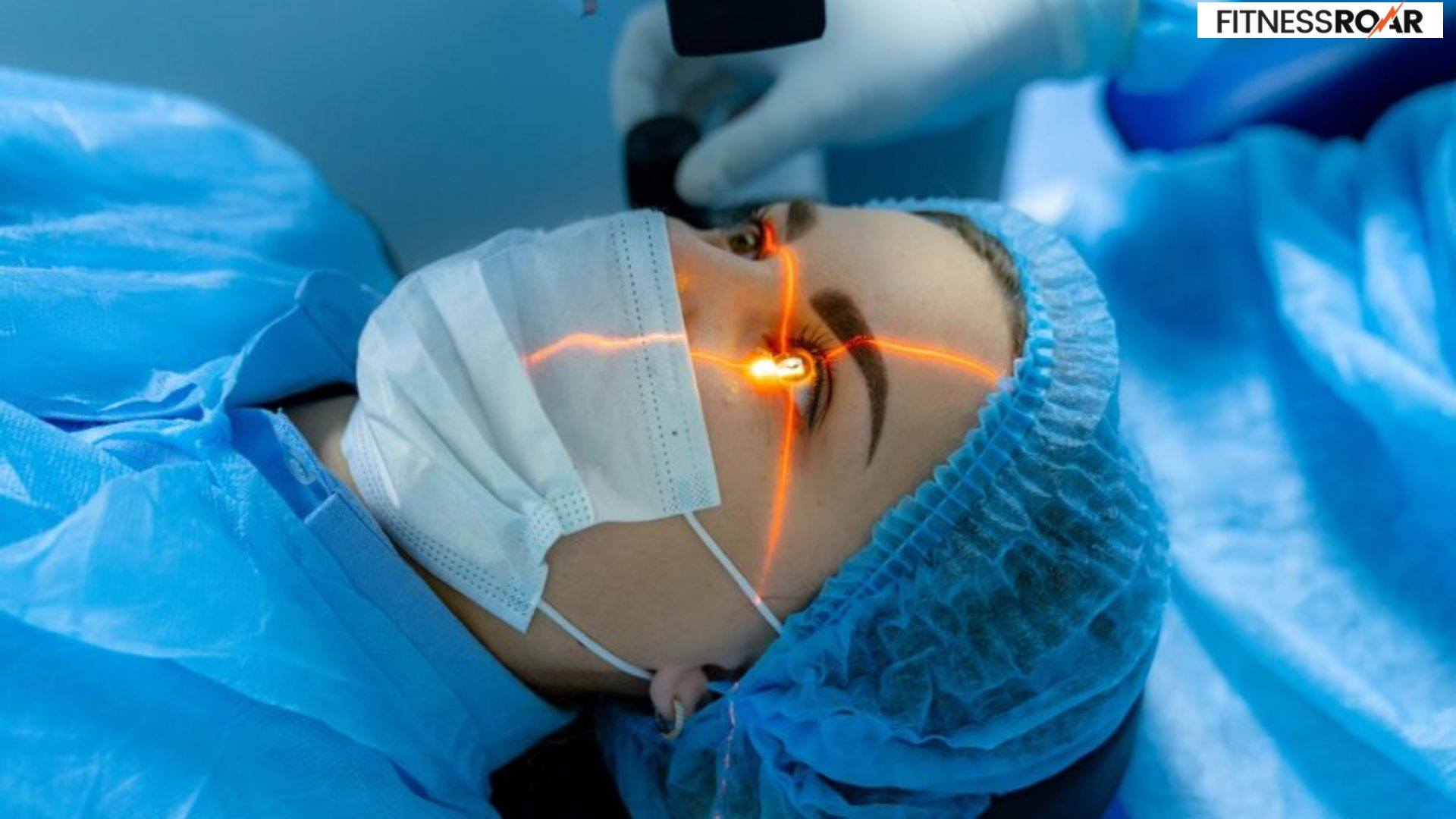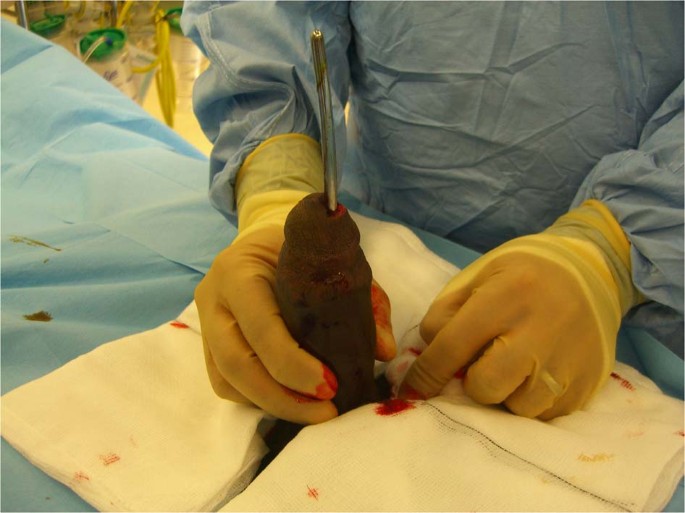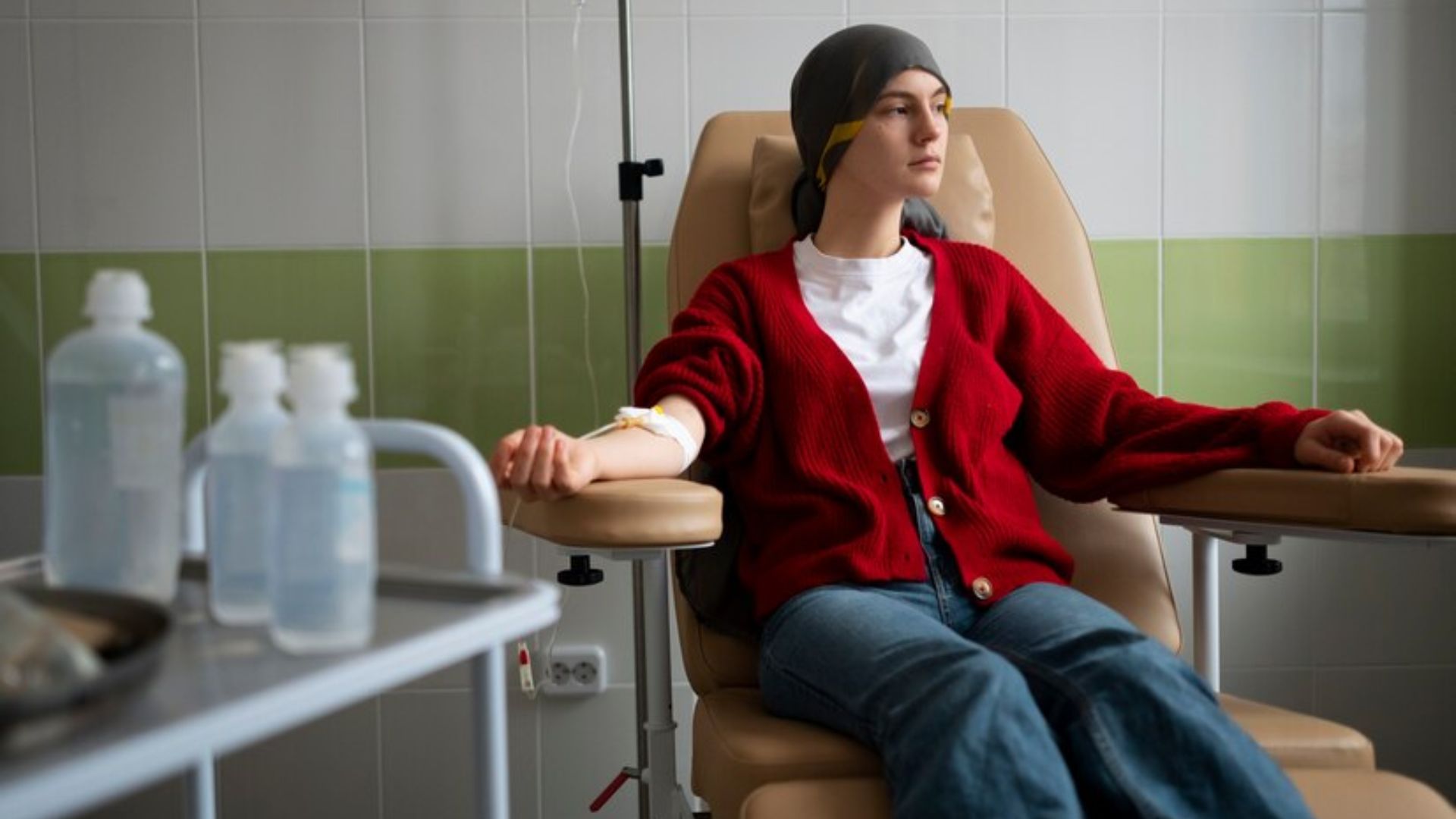Cord Prolapse: Key Facts on Causes and Symptoms

Pregnancy is a joyous journey, but it’s also important to be aware of potential complications. One such concern is umbilical cord prolapse, a serious situation that can arise during labor and delivery.
Normally, the baby comes out first, followed by the umbilical cord. However, in a cord prolapse, the umbilical cord descends through the cervix and vagina before the baby. This exposes the cord to compression, potentially cutting off the baby’s vital blood and oxygen supply.
Early recognition and intervention are crucial in umbilical cord prolapse cases. By understanding the signs and risks, expectant parents and healthcare providers can be better prepared to address this emergency. Educational awareness can empower expecting mothers to ask questions and voice concerns during prenatal care, potentially leading to earlier detection and improved outcomes.
Also Read: Yoga Asanas for Relieving Stress
Understanding Cord Prolapse

Umbilical cord prolapse is a serious obstetric emergency that occurs during labor and delivery. It happens when the umbilical cord slips down through the cervix (the opening of the uterus) and into the vagina ahead of the baby. Normally, the baby’s presenting part (head or buttocks) fills the cervix first, protecting the umbilical cord. However, in a prolapse, the cord becomes exposed in the birth canal, putting the baby at risk of complications.
Several other emergencies can arise during childbirth, but they differ from cord prolapse in key ways:
- Shoulder dystocia: This occurs when the baby’s shoulder gets stuck behind the mother’s pubic bone during delivery. While both are birth emergencies, shoulder dystocia doesn’t directly threaten the baby’s oxygen supply like cord prolapse.
- Uterine rupture: This is a tear in the wall of the uterus, which can cause severe bleeding for the mother and distress for the baby. Unlike cord prolapse, uterine rupture doesn’t involve the umbilical cord but can be a consequence of forceful contractions.
- Placental abruption: This is the partial or complete detachment of the placenta from the uterine wall before birth. Similar to cord prolapse, it can cut off the baby’s oxygen supply, but the cause and location of the problem differ.
The exact cause of cord prolapse isn’t always clear, but several factors can contribute:
- Premature rupture of membranes (PROM): When the amniotic sac breaks too early, it can displace the presenting part and allow the cord to prolapse.
- Multiple pregnancy: With twins, triplets, or more, there’s a higher risk of the cord slipping past a presenting baby.
- Abnormal fetal presentation: Breech presentation (feet-first) or a transverse lie (baby sideways) can leave more room for the cord to prolapse.
- Uterine overdistention: Carrying a large baby or having a lot of amniotic fluid can stretch the uterus, making it easier for the cord to descend.
- Previous uterine surgery: Certain surgeries like a cesarean section or fibroid removal can leave scar tissue that weakens the cervix, increasing the risk of prolapse.
Multiple pregnancies: As mentioned earlier, having multiples significantly increases the risk of cord prolapse. With more than one baby vying for space in the womb, the cord is more likely to get jostled and prolapse.
Maternal age: Both very young and older mothers are considered to have a slightly higher risk of cord prolapse. The reasons for this association are not fully understood, but it’s important to be aware of this potential factor.
Previous history of cord prolapse: If you’ve experienced cord prolapse in a previous delivery, your risk is higher in subsequent pregnancies.
Oligohydramnios: This refers to having less amniotic fluid than normal. The cushioning effect of the fluid can help keep the baby positioned correctly and protect the cord.
Forceps or vacuum delivery: While uncommon today, these assisted delivery methods can increase the risk of cord prolapse if not used carefully.
By understanding these causes and risk factors, healthcare providers can identify women at higher risk and take steps to monitor them more closely during labor.
Unfortunately, there aren’t always clear-cut symptoms for cord prolapse. However, some signs can indicate a potential problem:
- Visible or palpable cord: If you feel a pulsating mass in your vagina during labor, it could be the umbilical cord.
- Sudden change in fetal heart rate: A drop in the baby’s heart rate can be a sign of compromised oxygen supply due to cord compression.
- Increased vaginal bleeding: This isn’t a specific symptom of cord prolapse, but any unexpected bleeding during labor should be reported immediately.
It’s important to remember that not all women will experience these signs. The best course of action is to be aware of the risk factors and to communicate any concerns to your healthcare provider throughout your pregnancy.
Also Read: Ways to Lose Mummy Tummy
The Impact of Cord Prolapse
Umbilical cord prolapse is a time-sensitive emergency primarily threatening the baby’s well-being. The biggest concern is:
Fetal hypoxia: When the umbilical cord prolapses and becomes compressed, the blood flow through the cord can be cut off, depriving the baby of vital oxygen. This oxygen deprivation, if not promptly addressed, can lead to serious complications:
- Acidosis: A buildup of acid in the baby’s blood, which can damage organs and impair brain function.
- Birth asphyxia: When the baby is deprived of oxygen for a prolonged period, leading to difficulty breathing and potentially organ failure.
- Increased risk of cerebral palsy: Severe oxygen deprivation can damage the developing brain, leading to cerebral palsy, a condition that affects movement, muscle tone, and coordination.
- Stillbirth: In the most severe cases, prolonged lack of oxygen can lead to stillbirth.
While the primary concern is for the baby, cord prolapse can also pose some risks to the mother:
Increased risk of infection: A prolapsed umbilical cord can introduce bacteria into the birth canal, raising the risk of infection for both mother and baby.
Potential for postpartum hemorrhage: In rare cases, cord prolapse can be a contributing factor to excessive bleeding after delivery.
The complications of cord prolapse can range from mild to severe, depending on the duration of cord compression and the baby’s overall health. Early detection and intervention are crucial in minimizing the risk of complications.
Data on cord prolapse incidence is limited due to variations in reporting and definitions. However, studies suggest it occurs in roughly 0.2% to 0.6% of deliveries [1]. This translates to approximately 1 in 500 to 1 in 1600 births.
Cord prolapse can occur in any pregnancy, but certain regions may have slightly higher incidence rates due to factors like access to prenatal care or higher rates of preterm births.
It’s important to note that these are general estimates, and individual risk factors can significantly influence the incidence rate for a particular pregnancy.
Diagnosing and Treating Cord Prolapse
Early diagnosis is critical in cord prolapse cases. Here’s how it’s typically identified:
- Vaginal examination: During a vaginal exam, the healthcare provider can feel the umbilical cord protruding through the cervix or vagina.
- Fetal heart rate monitoring: A sudden drop in the baby’s heart rate on a monitor can be a sign of cord compression.
- Ultrasound: In some situations, an ultrasound may be used to confirm the position of the baby and the cord.
Healthcare providers play a vital role in prompt diagnosis. They should be aware of the risk factors for cord prolapse and be vigilant during labor, especially for high-risk pregnancies.
- Communication: Women should openly discuss any concerns about cord prolapse with their healthcare providers throughout pregnancy.
- Quick response: If a prolapse is suspected, the healthcare provider should act swiftly to assess the situation and plan for delivery.
The primary goal of treatment in cord prolapse is immediate delivery of the baby to relieve pressure on the umbilical cord. Here’s an overview of treatment methods:
Emergency Cesarean Section (C-section): This is the preferred mode of delivery in most cord prolapse cases. It allows for the quickest and safest way to deliver the baby and minimize the risk of complications.
Vaginal delivery with maneuvers: In some cases, if the cervix is fully dilated and the baby is already low in the birth canal, a vaginal delivery with maneuvers might be attempted. This may involve gently lifting the baby’s head to relieve pressure on the cord or using sterile water to fill the mother’s bladder (a technique called vaginal vault tamponade) to temporarily displace the presenting part. However, a C-section is generally preferred due to the time-sensitive nature of cord prolapse.
While not a replacement for prompt delivery, there are ongoing research efforts to develop methods for temporarily improving blood flow through the umbilical cord during a prolapse. These are complex procedures and are not yet widely used in clinical settings.
Once a cord prolapse is diagnosed, every minute counts. Here’s how healthcare providers manage delivery:
- Prioritizing fetal well-being: The primary focus is on ensuring the baby’s health. The healthcare team will act swiftly to deliver the baby using the safest and fastest method possible.
- Minimizing cord compression: If a vaginal delivery is attempted, maneuvers will be used to keep the cord from being compressed between the baby’s head and the mother’s pelvis.
- Communication and coordination: The healthcare team will work together seamlessly to ensure a smooth and efficient delivery.
The healthcare provider’s role is critical during delivery:
- Taking charge: The doctor or midwife will take decisive action to manage the situation and ensure a safe delivery for both mother and baby.
- Explaining procedures: The healthcare provider will keep the mother informed and explain the planned course of action.
- Emotional support: This is a stressful situation, and the healthcare team will provide emotional support to the mother and her family.
Beyond Treatment
While not all cord prolapses are preventable, some strategies can help reduce the risk:
Prenatal care: Attending regular prenatal appointments allows healthcare providers to monitor for risk factors like polyhydramnios or abnormal fetal presentation. Early detection can lead to closer monitoring and potentially interventions to minimize the risk.
Avoiding maneuvers that increase risk: Certain procedures during labor, like amniotomy (artificial breaking of waters) or internal fetal monitoring, can slightly elevate the risk of cord prolapse. Discussing the risks and benefits of these interventions with your healthcare provider is important.
Maintaining a healthy lifestyle: Eating a balanced diet, exercising regularly, and managing pre-existing health conditions can contribute to a healthy pregnancy and potentially lower the risk of complications like cord prolapse.
It’s important to understand that there’s no guaranteed way to prevent cord prolapse entirely. However, prenatal care, informed decision-making regarding interventions, and a healthy lifestyle can contribute to a lower risk environment.
Here are some additional points to consider:
- Early detection of risk factors: Identifying risk factors early allows for closer monitoring and potentially preventative measures during labor.
- Communication with healthcare providers: Open communication with your doctor or midwife throughout pregnancy is vital. Discussing your concerns and understanding the risks and benefits of various procedures can empower you to make informed decisions.
The prognosis for both mother and baby depends on several factors, including the severity and duration of the cord prolapse, as well as the overall health of the mother and baby.
- Baby’s prognosis: Early diagnosis and prompt delivery are crucial for minimizing the risk of complications for the baby. In cases where oxygen deprivation was limited, the baby may recover fully with no lasting effects. However, in more severe cases, there’s a risk of complications like cerebral palsy or intellectual disabilities.
- Mother’s prognosis: Mothers who experience cord prolapse are generally at no increased risk for future pregnancies. However, the emotional impact of the experience can be significant, and postpartum support is crucial.
Including personal stories can add a powerful dimension to your chapter. You can search for online resources or reach out to support groups for mothers who have experienced cord prolapse. Sharing these stories (with permission, of course) can provide a more comprehensive understanding of the emotional and psychological impact of this experience.
Here are some things to consider when including personal stories:
- Focus on resilience: While the experience can be frightening, many mothers find strength and resilience in overcoming this challenge. Uplifting stories can offer hope and support to others facing similar situations.
- Importance of support: Highlight the importance of support systems, both medical and emotional, in helping families cope with the aftermath of cord prolapse.
By incorporating these elements, you can create a well-rounded chapter that goes beyond the medical aspects of cord prolapse and acknowledges the human side of this experience.
Also Read: The Secret Tips to Burn Fat Effectively
Expanding Knowledge and Awareness
Researchers are constantly working to improve our understanding and management of cord prolapse. Here’s a glimpse into some recent areas of focus:
- Predicting cord prolapse: Identifying reliable ways to predict which pregnancies are at higher risk could allow for more targeted monitoring and potentially preventative measures.
- Improving delivery techniques: Studies are exploring ways to refine delivery techniques in cord prolapse cases, particularly minimizing cord compression during vaginal delivery (if attempted).
- Newborn resuscitation after cord prolapse: Research is ongoing to develop more effective methods for resuscitating newborns who have experienced oxygen deprivation due to cord prolapse.
The future of cord prolapse research holds promise for even better outcomes:
- Early detection markers: Identifying biomarkers or specific ultrasound findings that could signal a higher risk of cord prolapse would be a significant advancement.
- Cord protection techniques: Exploring methods to temporarily improve blood flow through the cord during a prolapse or developing devices to physically protect the cord could be life-saving innovations.
- Long-term effects on babies: More research is needed to understand the long-term consequences of cord prolapse on a child’s development, allowing for better support and intervention strategies.
While uncommon, cord prolapse can occur in animals as well. Here’s a brief comparison:
- Similarities: The basic mechanism of cord prolapse is similar across species – the umbilical cord descends before the baby. The consequences of oxygen deprivation to the fetus are also comparable.
- Differences: The incidence rates and risk factors may vary depending on the animal species. Additionally, birthing practices and veterinary interventions can differ from human deliveries.
Understanding cord prolapse in animals can provide valuable insights for human medicine. Animal models can be used to test new preventative or treatment strategies in a controlled setting before applying them to human pregnancies.
Legal aspects surrounding cord prolapse are primarily focused on ensuring proper management and communication:
- Standard of care: Healthcare providers are expected to adhere to established guidelines for managing cord prolapse. This includes prompt diagnosis, prioritizing fetal well-being, and clear communication with the mother.
- Informed consent: If a situation arises where a C-section becomes necessary due to cord prolapse, the mother should be informed of the risks and benefits and asked for her consent before proceeding.
Education is key in preventing and managing cord prolapse:
- Healthcare professionals: Medical associations and professional bodies offer educational resources and guidelines for healthcare providers on managing cord prolapse effectively.
- Expectant parents: Reputable health organizations and pregnancy websites provide information for expectant parents about cord prolapse, its risk factors, and the importance of discussing concerns with their healthcare providers.
Healthcare providers play a vital role in every aspect of cord prolapse:
- Prenatal care: Identifying risk factors during prenatal visits allows for closer monitoring and potentially reduces the risk of complications.
- Prompt diagnosis: Early recognition of cord prolapse is crucial for minimizing the risk of harm to the baby.
- Delivery management: Swift and decisive action during delivery is essential to ensure a safe outcome for both mother and baby.
- Communication and support: Healthcare providers should keep the mother informed throughout the process and offer emotional support to her and her family.
By understanding the latest research, legal considerations, and best practices, healthcare providers can be better equipped to handle cord prolapse situations and ensure the best possible outcomes for mothers and their babies.
In Crux
Umbilical cord prolapse, while uncommon, is a serious obstetric emergency that requires immediate attention. Throughout this blog, we’ve explored the various facets of cord prolapse, from understanding the causes and risk factors to the critical role of diagnosis and treatment.
Knowledge empowers informed decision-making. By familiarizing yourself with cord prolapse and its potential implications, you can participate actively in your pregnancy journey and voice any concerns you may have. Remember, open communication with your healthcare provider is vital throughout your pregnancy.
This blog serves as a starting point for further exploration. We encourage you to seek reliable educational resources and discuss any questions or concerns with your doctor. Together, we can work towards safer deliveries and healthier beginnings for mothers and babies.
How much did you like Our detailed Understanding Low Testosterone: Causes, Symptoms & Treatment? Please share your view in the comment box. Also, please share these Blogs with your friends on social media.
Recommended














